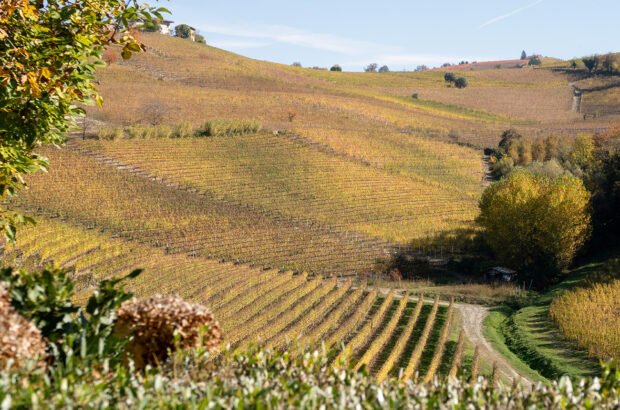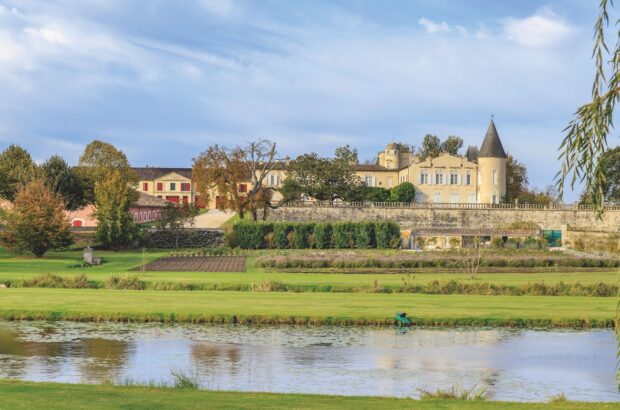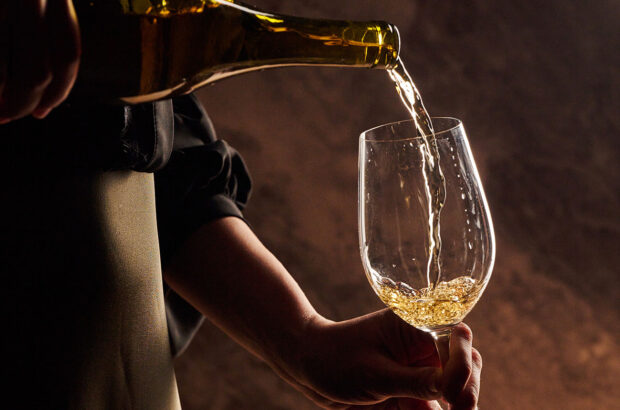New York state has found a solution to global warming – at least for wine lovers. Ripeness and alcohol levels are being driven to unprecedented heights by rising temperatures in wine-producing regions around the world. Cool-climate New York, however, is providing a refreshing alternative. Adventurous wine lovers today can find delicious examples of everything from Blaufränkisch to Saperavi and Lagrein from New York.
This new-found confidence demonstrates a maturing wine industry. Over-extracted Merlot and over-oaked Chardonnay are far less common than they once were. Some 25 years ago, many producers were trying to imitate the high-scoring wines of the Napa Valley in California, but they often had little appeal outside the summer holidays. Today, New York’s wines are limpid and pure – and sommeliers are delighted.
The somewhat disappointing nature of the state’s early wines was not due to a lack of effort; the history of grape-growing in New York is long. The first vineyards were planted in the 17th century by Dutch settlers who found wild grapevines growing in the Hudson Valley. Native varieties are mostly from the species Vitis labrusca and Vitis riparia, which include the best-known local grapes Concord and Niagara (often used for juice and jam). They are very cold-hardy and resistant to phylloxera.
{"content":"PC9wPgo8aDM+4oCYRmF0aGVyIG9mIHZpbmlmZXJh4oCZPC9oMz4KPHA+VGhlcmUgd2FzIGxpdHRsZSBzdWNjZXNzIHdpdGggRXVyb3BlYW4gd2luZS1ncmFwZSB2YXJpZXRpZXMgKDxlbT5WaXRpcyB2aW5pZmVyYTwvZW0+KSB1bnRpbCB0aGUgMTk1MHMgYW5kIHRoZSBwaW9uZWVyaW5nIHdvcmsgb2YgRHIgS29uc3RhbnRpbiBGcmFuayDigJMgYSBVa3JhaW5pYW4gdml0aWN1bHR1cmlzdCB3aG8gZW1pZ3JhdGVkIGluIDE5NTEuIER1ZSB0byB0aGUgZGlmZmljdWx0eSBvZiBncm93aW5nIGdyYXBlcyBpbiBOZXcgWW9ya+KAmXMgY2xpbWF0ZSwgdmluaWZlcmEgd2FzIHNsb3cgdG8gY2F0Y2ggb24sIGV2ZW4gYXMgYnVzaW5lc3MgYm9vbWVkIGZvciBuYXRpdmUgdmFyaWV0aWVzIGFuZCBoeWJyaWRzLiBGb3J0dW5hdGVseSBmb3Igd2luZSBsb3ZlcnMsIERyIEZyYW5rIHBlcnNpc3RlZC48L3A+CjxwPjxkaXYgY2xhc3M9ImFkLWNvbnRhaW5lciBhZC1jb250YWluZXItLW1vYmlsZSI+PGRpdiBpZD0icG9zdC1pbmxpbmUtMiIgY2xhc3M9ImlwYy1hZHZlcnQiPjwvZGl2PjwvZGl2PjwvcD4KPHA+SGlzIGVhcmxpZXN0IHN1Y2Nlc3Mgd2FzIHdpdGggUmllc2xpbmcuIEJlY2F1c2Ugb2YgaXRzIHJlbGF0aXZlIHRvbGVyYW5jZSBvZiBjb2xkLCB0aGUgdmFyaWV0eSBpcyBhIG5hdHVyYWwgZml0IGZvciB0aGUgTmV3IFlvcmsgY2xpbWF0ZSB3aXRoIGl0cyBoYXJzaCB3aW50ZXJzLiBSaWVzbGluZyBhbHNvIGRvZXMgd2VsbCBpbiB0aGUgc2hhbGUgc29pbHMgb2YgdGhlIEZpbmdlciBMYWtlcyByZWdpb24uIFRoaXMgY29tcGFjdCBzZWRpbWVudGFyeSByb2NrIChzaW1pbGFyIHRvIHNsYXRlIGJ1dCBzb2Z0ZXIgYW5kIG1peGVkIHdpdGggY2xheSkgbGltaXRzIHZpZ291ciBhbmQgeWllbGQsIHByb2R1Y2luZyBoaWdoLXF1YWxpdHkgcmVzdWx0cy4gVGhlIHJlZ2lvbiByZWNlaXZlcyByZWd1bGFyIHJhaW5mYWxsIHRocm91Z2hvdXQgdGhlIGdyb3dpbmcgc2Vhc29uIGFuZCBtb3N0IG9mIHRoZSB2aW5leWFyZHMgYXJlIGRyeS1mYXJtZWQuIFF1YWxpdHktb3JpZW50ZWQgZ3Jvd2VycyB3aWxsIGluc3RhbGwgZHJhaW5hZ2UgdGlsZXMgd2hlbiBwbGFudGluZyBhIG5ldyB2aW5leWFyZC48L3A+CjxibG9ja3F1b3RlPgo8cD7igJhXZeKAmXJlIGhhdmluZyBhIG11Y2ggZGVlcGVyIGNvbnZlcnNhdGlvbiBhYm91dCBzaXRlcy4gSXTigJlzIG5vIGxvbmdlciBqdXN0IOKAnGVhc3Qgc2lkZSBvZiB0aGUgbGFrZSwgd2VzdCBzaWRlIG9mIHRoZSBsYWtl4oCdICYjODIxMTsgT3NrYXIgQnlua2UsIEhlcm1hbm4gSiBXaWVtZXI8L3A+CjwvYmxvY2txdW90ZT4KPHA+Umllc2xpbmcgaXMgc3RpbGwgdGhlIGNvcmUgb2YgdGhlIHJhbmdlIGF0IERyIEtvbnN0YW50aW4gRnJhbmsgdG9kYXksIGJ1dCBpdHMgZm91bmRlciB3YXMgYWxzbyBhbiBpbnZldGVyYXRlIGV4cGVyaW1lbnRlciwgd2l0aCBhIFBoRCBpbiB2aXRpY3VsdHVyZSBmcm9tIE9kZXNzYSBQb2x5dGVjaG5pYyBJbnN0aXR1dGUuIEFtb25nIHRoZSB2YXJpZXRpZXMgdGhhdCBoZSBwbGFudGVkIHdhcyB0aGUgR2VvcmdpYW4gd2hpdGUgZ3JhcGUgUmthdHNpdGVsaSwgd2hpY2ggdGhlIGNvbXBhbnkgc3RpbGwgcHJvZHVjZXMsIGluIHR3byB2ZXJzaW9uczogb25lIGlzIGZlcm1lbnRlZCBvbiB0aGUgc2tpbnMsIGFzIGluIEdlb3JnaWFuIHF2ZXZyaSwgYW5kIHRoZSBvdGhlciBhZnRlciBwcmVzc2luZy4gRnJhbmvigJlzIGdyZWF0LWdyYW5kZGF1Z2h0ZXIgTWVhZ2hhbiBpcyB3b3JraW5nIGFzIGdlbmVyYWwgbWFuYWdlciBhbG9uZ3NpZGUgaGVyIGZhdGhlciBGcmVkZXJpY2suIFNoZSBlbnRodXNlcyBhYm91dCBhbm90aGVyIEdlb3JnaWFuIHZhcmlldHksIHRoZSByZWQgU2FwZXJhdmk6IOKAmFRoaXMgZ3JhcGUgaGFzIGEgbG90IG9mIHBvdGVudGlhbCBoZXJlIOKAkyBpdOKAmXMgYmVjb21lIGEgcmlzaW5nIHN0YXIgcGFydGx5IGJlY2F1c2Ugb2YgaXRzIGRlZXAgY29sb3VyLCB3aGljaCBpcyBbZ2VuZXJhbGx5XSBkaWZmaWN1bHQgdG8gYWNoaWV2ZSBpbiB0aGUgRmluZ2VyIExha2VzLuKAmTwvcD4KPGRpdiBjbGFzcz0iYWQtY29udGFpbmVyIGFkLWNvbnRhaW5lci0tbW9iaWxlIj48ZGl2IGlkPSJwb3N0LWlubGluZS0zIiBjbGFzcz0iaXBjLWFkdmVydCI+PC9kaXY+PC9kaXY+CjxoMz5Db29sIHRoaW5raW5nPC9oMz4KPHA+SGVybWFubiBKIFdpZW1lciB3YXMgYW5vdGhlciBlYXJseSBhZHZvY2F0ZSBvZiBSaWVzbGluZyBpbiB0aGUgRmluZ2VyIExha2VzOyBoaXMgZmFtaWx5IGhhZCBiZWVuIGdyb3dlcnMgaW4gR2VybWFueeKAmXMgTW9zZWwgdmFsbGV5IGZvciBnZW5lcmF0aW9ucy4gSGUgbW92ZWQgdG8gTmV3IFlvcmsgaW4gMTk2OCB0byB3b3JrIGZvciB0aGUgVGF5bG9yIFdpbmUgQ28gKGxhdGVyIGNhbGxlZCBCdWxseSBIaWxsKSwgd2hpY2ggaGFkIGJlZW4gcHJvZHVjaW5nIHdpbmUgZnJvbSBoeWJyaWRzIHNpbmNlIHRoZSAxOXRoIGNlbnR1cnkuIFdpZW1lciBoYWQgaGlzIGhlYXJ0IHNldCBvbiBSaWVzbGluZywgaG93ZXZlciwgYW5kIGluIDE5NzQgaGUgYmVnYW4gdG8gcGxhbnQgdmluZXlhcmRzIGZvciBoaXMgZXBvbnltb3VzIHdpbmVyeS48L3A+CjxwPkhpcyBwcm90w6lnw6ksIEZyZWQgTWVyd2FydGgsIGNvbnRpbnVlcyB0byBmaW5lLXR1bmUgdGhlIHJlbGF0aW9uc2hpcCBiZXR3ZWVuIHRoZSBncmFwZSBhbmQgdGhlIHNpdGUuIOKAmFRoZSBmaXJzdCBzaXRlLCBvdXIgaG9tZSB2aW5leWFyZCAobm93IGNhbGxlZCB0aGUgSEpXIFZpbmV5YXJkKSwgaXMgY29vbGVyIGJlY2F1c2UgaXTigJlzIG9uIHNoYWxsb3cgc2hhbGUgc29pbHMgaGlnaCB1cCBvbiB0aGUgcGxhdGVhdS4gV2hlbiB5b3UgZ2V0IGNsb3NlciB0byB0aGUgbGFrZSwgdGhlcmXigJlzIG1vcmUgb2YgYSB3YXJtaW5nIGVmZmVjdCBmcm9tIHRoZSB3YXRlci7igJkgSW4gMTk5OSwgV2llbWVyIGJvdWdodCBhIHNpdGUgbG9jYXRlZCAxNmttIGZ1cnRoZXIgbm9ydGgsIHdoZXJlIHRoZSBmcnVpdCBjYW4gcmlwZW4gdHdvIHdlZWtzIGVhcmxpZXIuIE1lcndhcnRo4oCZcyBidXNpbmVzcyBwYXJ0bmVyIE9za2FyIEJ5bmtlIG5vdGVzOiDigJhOb3cgdGhhdCB3ZeKAmXJlIDQwIHllYXJzIGludG8gaXQsIHdl4oCZcmUgaGF2aW5nIGEgbXVjaCBkZWVwZXIgY29udmVyc2F0aW9uIGFib3V0IHNpdGVzLiBJdOKAmXMgbm8gbG9uZ2VyIGp1c3Qg4oCcZWFzdCBzaWRlIG9mIHRoZSBsYWtl4oCdIG9yIOKAnHdlc3Qgc2lkZSBvZiB0aGUgbGFrZeKAnS7igJk8L3A+CjxkaXYgY2xhc3M9ImFkLWNvbnRhaW5lciBhZC1jb250YWluZXItLW1vYmlsZSI+PGRpdiBpZD0icG9zdC1pbmxpbmUtNCIgY2xhc3M9ImlwYy1hZHZlcnQiPjwvZGl2PjwvZGl2Pgo8aHI+CjxkaXYgY2xhc3M9ImJyZWFrb3V0IHBhbGV0dGUtYSBwYW5lbCBwYW5lbC1kZWZhdWx0Ij48ZGl2IGNsYXNzPSJwYW5lbC1ib2R5Ij48ZGl2IGNsYXNzPSdicmVha291dC1jb250ZW50Jz48L3A+CjxoMyBzdHlsZT0idGV4dC1hbGlnbjogY2VudGVyOyI+TmV3IFlvcmsgU3RhdGUgYXQgYSBnbGFuY2U8L2gzPgo8cD48c3Ryb25nPk51bWJlciBvZiB3aW5lcmllczo8L3N0cm9uZz4gNDAzPGJyIC8+CjxzdHJvbmc+QXJlYSB1bmRlciB2aW5lOjwvc3Ryb25nPiAxLDQwMGhhPGJyIC8+CjxzdHJvbmc+TW9zdC1wbGFudGVkIHZhcmlldGllczo8L3N0cm9uZz4gUmllc2xpbmcsIENoYXJkb25uYXksIE1lcmxvdCwgQ2FiZXJuZXQgRnJhbmMsIFBpbm90IE5vaXI8YnIgLz4KPHN0cm9uZz5Qcm9kdWN0aW9uICgyMDE4KTo8L3N0cm9uZz4gMS4xbSBobDxiciAvPgo8c3Ryb25nPkZpcnN0IHZpbmV5YXJkOjwvc3Ryb25nPiAxNjQ3PGJyIC8+CjxzdHJvbmc+Rmlyc3QgY29tbWVyY2lhbCB3aW5lcnk6PC9zdHJvbmc+IEJyb3RoZXJob29kIGluIDE4Mzg8YnIgLz4KPHN0cm9uZz5BVkFzIChlc3RhYmxpc2hlZCk6PC9zdHJvbmc+IEZpbmdlciBMYWtlcyAoMTk4MiksIEh1ZHNvbiBSaXZlciBSZWdpb24gKDE5ODIpLCBMYWtlIEVyaWUgKDE5ODMpLCBOb3J0aCBGb3JrIG9mIExvbmcgSXNsYW5kICgxOTg2KSwgQ2F5dWdhIExha2UgKDE5ODgpLDxiciAvPgpMb25nIElzbGFuZCAoMjAwMSksIFNlbmVjYSBMYWtlICgyMDAzKSwgVGhlIEhhbXB0b25zLCBMb25nIElzbGFuZCAoMjAwNSksIE5pYWdhcmEgRXNjYXJwbWVudCAoMjAwNSksIENoYW1wbGFpbiBWYWxsZXkgb2YgTmV3IFlvcmsgKDIwMTYpLCBVcHBlciBIdWRzb24gKDIwMTkpIDwvcD4KPC9kaXY+PGRpdiBjbGFzcz0nYnJlYWtvdXQtYnV0dG9ucyc+PGRpdiBjbGFzcz0ncm93Jz48L2Rpdj48L2Rpdj48L2Rpdj48L2Rpdj4KPGRpdiBjbGFzcz0iYWQtY29udGFpbmVyIGFkLWNvbnRhaW5lci0tbW9iaWxlIj48ZGl2IGlkPSJwb3N0LWlubGluZS01IiBjbGFzcz0iaXBjLWFkdmVydCI+PC9kaXY+PC9kaXY+Cjxocj4KPGgzPlJlZ2lvbmFsIGRpdmVyc2l0eTwvaDM+CjxwPkRpZmZlcmVuY2VzIGFyZSBldmVuIG1vcmUgcHJvbm91bmNlZCBiZXR3ZWVuIGRpZmZlcmVudCByZWdpb25zIHdpdGhpbiBOZXcgWW9yayBzdGF0ZS4gTW9yZSB0aGFuIDQ4MGttIHNlcGFyYXRlcyB0aGUgRmluZ2VyIExha2VzIGZyb20gdGhlIE5vcnRoIEZvcmsgb2YgTG9uZyBJc2xhbmQg4oCTIGFib3V0IHRoZSBzYW1lIGRpc3RhbmNlIGFzIFJpb2phIHRvIEJhcmNlbG9uYS48L3A+CjxwPkJydWNlIFNjaG5laWRlciBvZiBHb3RoYW0gUHJvamVjdCBoYXMgYmVlbiBtYWtpbmcgQ2FiZXJuZXQgRnJhbmMgaW4gYm90aCB0aGUgTmV3IFlvcmsgcmVnaW9ucyBmb3IgMjUgeWVhcnMuIOKAmENhYmVybmV0IEZyYW5jIGlzIGRlZmluaXRlbHkgdGhlIHJlZCBncmFwZSBvZiBOZXcgWW9yayBTdGF0ZSzigJkgaGUgYXNzZXJ0cy48L3A+CjxwPuKAmEdpdmVuIHRoZSBkaWZmZXJlbnQgY2xpbWF0ZXMgd2UgaGF2ZSBpbiB0aGUgRmluZ2VyIExha2VzIGFuZCBMb25nIElzbGFuZCwgeW91IGNhbiBwcm9kdWNlIGEgcmFuZ2Ugb2Ygc3R5bGVzLiBUbyBtZSwgdGhlIEZpbmdlciBMYWtlcyBoYXMgbW9yZSBpbiBjb21tb24gd2l0aCB0aGUgTG9pcmUgVmFsbGV5IGluIHRlcm1zIG9mIGNsaW1hdGUsIHdoZXJlYXMgb24gTG9uZyBJc2xhbmQgdGhlIHdpbmVzIGFyZSBhIGxpdHRsZSBtb3JlIGZ1bGwtYm9kaWVkIGFuZCBzdHJ1Y3R1cmVkLCBtb3JlIGxpa2UgUmlnaHQgQmFuayBCb3JkZWF1eC7igJk8L3A+CjxwPkthcmVlbSBNYXNzb3VkIG9mIFBhdW1hbm9rIFZpbmV5YXJkcyBvbiB0aGUgTm9ydGggRm9yayBvZiBMb25nIElzbGFuZCBmcmFtZXMgdGhlIGNvbXBhcmlzb24gZGlmZmVyZW50bHksIGluIHRlcm1zIG9mIFJpZXNsaW5nOiDigJhUaGUgRmluZ2VyIExha2VzIGlzIHNpbWlsYXIgdG8gdGhlIE1vc2VsLCB3aGlsZSBMb25nIElzbGFuZCBpcyBtb3JlIGxpa2UgdGhlIFBmYWx6LuKAmSBNYXNzb3VkIHdvdWxkIGtub3cg4oCTIGhpcyBtb3RoZXLigJlzIGZhbWlseSB3ZXJlIGdyb3dlcnMgaW4gdGhlIFBmYWx6IGZvciBzZXZlcmFsIGdlbmVyYXRpb25zIGJlZm9yZSBlbWlncmF0aW5nLjwvcD4KPHA+U29tZSBoYXZlIG1vcmUgb2YgYSBOZXcgWW9yayBmcmFtZSBvZiByZWZlcmVuY2UuIENocmlzdG9waGVyIFRyYWN5IGlzIHRoZSB3aW5lbWFrZXIgYXQgQ2hhbm5pbmcgRGF1Z2h0ZXJzLiBIaXMgZmlyc3Qgd2luZW1ha2luZyBqb2Igd2FzIHdpdGggdGhlIGZvdW5kaW5nIHdpbmVtYWtlciB0aGVyZSwgTGFycnkgUGVycmluZSwgd2hvIGhhZCB3b3JrZWQgd2l0aCBIZXJtYW5uIFdpZW1lciB3aGlsZSBkb2luZyBncmFkdWF0ZSB3b3JrIGF0IENvcm5lbGwgVW5pdmVyc2l0eS4gVHJhY3kgam9pbmVkIHRoZSB0ZWFtIGluIDE5OTggYW5kIHRvb2sgb3ZlciB0aGUgd2luZW1ha2luZyBpbiAyMDAyLjwvcD4KPHA+VGhlIHdpbmVyeSBoYXMgZ3Jvd24gc3RlYWRpbHkgZHVyaW5nIHRoaXMgdGltZS4gQ2hhbm5pbmcgRGF1Z2h0ZXJzIG5vdyBmYXJtcyAxMmhhIGFuZCBzb3VyY2VzIGZydWl0IGZyb20gYSBmdXJ0aGVyIDEyaGEuIFdoZW4gaGUgYmVnYW4sIHRoZXkgcHJvZHVjZWQgZm91ciBvciBmaXZlIHdpbmVzIHRvdGFsbGluZyA0LDAwMC01LDAwMCAxMi1ib3R0bGUgY2FzZXMgYW5udWFsbHkuIE5vdyBDaGFubmluZyBEYXVnaHRlcnMgcHJvZHVjZXMgbW9yZSB0aGFuIDM2IGRpZmZlcmVudCB3aW5lcyBhbmQgcHJvZHVjdGlvbiBjYW4gcmVhY2ggMTYsMDAwIGNhc2VzLjwvcD4KPGRpdiBjbGFzcz0iaW5qZWN0aW9uIj48L2Rpdj4KPHA+QWNjb3JkaW5nIHRvIFRyYWN5OiDigJhPbmUgb2YgdGhlIHN0cmVuZ3RocyBvZiBMb25nIElzbGFuZCBpcyBpdHMgZGl2ZXJzaXR5LiBXZSBjYW7igJl0IGdyb3cgZXZlcnl0aGluZywgYnV0IHRoZXJl4oCZcyBhIGxvdCBvZiB0aGluZ3Mgd2UgY2FuIGdyb3cgaGVyZS7igJkgQW5kIHRoZXkgZG8sIHByb2R1Y2luZyBzZXZlbiBkcnkgcm9zw6lzLCBmaXZlIHNraW4tZmVybWVudGVkIHdoaXRlcywgYSBmdWxsIGNvbXBsZW1lbnQgb2Ygd2hpdGVzIGFuZCByZWRzLCBhIHNlcmllcyBvZiBww6l0LW5hdHMgYW5kIGEgcmFuZ2Ugb2YgdmVybW91dGhzIGZvciBnb29kIG1lYXN1cmUuPC9wPgo8cD5IaXMgZ29hbHMgYXMgYSB3aW5lbWFrZXIgY291bGQgc2VydmUgYXMgYSBtYW5pZmVzdG8gZm9yIE5ldyBZb3JrIHN0YXRlOiDigJhJIHdhbnQgdGhlIHdpbmVzIHRvIGJlIGZ1biwgam95ZnVsIGFuZCBoZWRvbmlzdGljLCBidXQgSSBzdGlsbCB3YW50IGNvbnNpc3RlbmN5IGFuZCBhYm92ZSBhbGwgcHVyaXR5IG9mIGFyb21hIGFuZCBleHByZXNzaW9uLuKAmTwvcD4KPHA+Cg=="}
New York State Wines top 10: Curtis recommends
{}
{"wineId":"42527","displayCase":"standard","paywall":true}
{"wineId":"42528","displayCase":"standard","paywall":true}
{"wineId":"42529","displayCase":"standard","paywall":true}
{"wineId":"42530","displayCase":"standard","paywall":true}
{"wineId":"42531","displayCase":"standard","paywall":true}
{"wineId":"42532","displayCase":"standard","paywall":true}
{"wineId":"42533","displayCase":"standard","paywall":true}
{"wineId":"42534","displayCase":"standard","paywall":true}
{"wineId":"42535","displayCase":"standard","paywall":true}
{"wineId":"42536","displayCase":"standard","paywall":true}
{}












